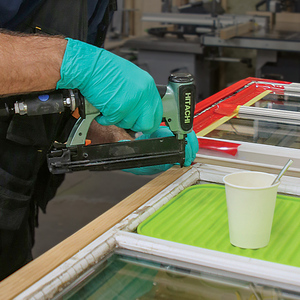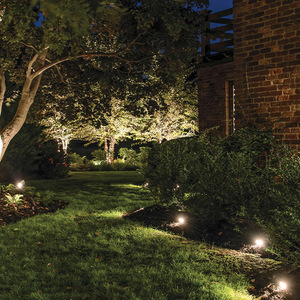Hi guys,
Need some advice. We’ll be demo’ing our kitchen in about a month to make way for something a little more user friendly. I’m debating about buying a Delta air cleaner to run during and after the demolition process. So my question is this, is worth spending the 300 bucks to run the thing during the demo? The walls and ceiling are old plaster and lath which are really in great shape, but need to come out.
What do you all think???
Thanks in advance, Gary



















Replies
Perhaps a high powered fan, in every window, would be a better way to keep the air inside the house a bit cleaner.
The Delta filter box might come in handy when your not creating so much dust.
The walls and ceiling are old
plaster and lath which are really in great shape,
but need to come out.
Just curious, why?
Did the same not too long ago. On a calm day when the temperature is nice outside, a high CFM fan blowing out of a window is all you need. Make sure you leave an opening about the size of the fan and not bigger. Of course you have to seal off the openings to the rest of the house and the openings of the duct works if there is any.
Tom
If you are really concerned about dust getting into other parts of the house, seal off all doors into the room with plastic and tape and put a fan in the window to create a negative pressure in the room. That will help keep dust from getting into the rest of the house. That way you if you clean up thoroughly at the end of the day, you have a shot at keeping the house sorta clean. There was an article in JLC a few months back about lead-safe remodeling, the author discusses the use of an air cleaner as well as HEPA filters in the shop vac.
Andy
I would definitelu use the filter in addition the window fan. But only use the window fan if you have a clear shot away. You don't need complaints about dust all over my car, blowing dust into neighbors house, sucking dust back into the house in the upstairs batroom window, causing automobile accidents because of dust cloud in the street, please wash my siding down because of this dirty dust stain you made on the wall, you killed my prize rose bush because it couldn't breathe through the coating of dust you put on it, my three year old caught bronchitis because her sandbox is right where you were blowing all your dust...
and make SURE the upstairs windows are closed!
been there, done that... ;o)
I'd echo Tom's concern. Why remove plaster and lath in good condition? Are you putting back a better finish (I can't think of one)? Have you been through a plaster demo before? Between the lead paint, dust (asbestos?) etc. do you really need to do this? (and blow it out into the entire neighborhood?). Yes, I know that everyone says that a kitchen should be a gut to the studs, but there are exceptions, particularly in an older house. Patching holes is less expensive than new finishes.
T. Jeffery Clarke
Edited 5/14/2002 2:20:35 PM ET by Jeff Clarke
Breathing old plaster dust is bad, to be avoided whenever possible. So what makes it all right to exhaust it out into the atmosphere?
Reminds me of the way we think we're solving the problem of spraying lacquers and solvent borne finishes and glues when we remove them from our work site. That stuff builds up in the atmosphere, doesn't it?
I've read that even sawdust has been classified a "class 3 carcinogen", whatever that is. Bottom line, if you have to wear a respirator or use an exhaust fan, that should be a red flag.
Edited 5/14/2002 2:46:40 PM ET by jim blodgett
>> So what makes it all right to exhaust it out into the atmosphere?
Dilution, the same thing that makes it all right to exhaust furnaces, fireplaces, automobiles, etc. out into the atmosphere. Plus, in the case of plaster dust, gravity. Most of it will fall to the ground before it gets to anyone's lungs.
Why remove plaster and lath in good condition?
Several reasons, Tho' I don't pretend to know which of these is in the authors mind -
Need to plumb old walls.
Need to insulate.
Need to run new plumbing and wiring - very common with kitchens and baths.
Want to place blocking for cabinets.
Suspect rot repairs needed.
Excellence is its own reward!
Piffin,
All of the above, except the rot part.
I've had the floor tested for asbestos, and am pretty confident everything else is okay for the demo...and the rest of the house will be very, very carefully sealed off.
Gary
Need to plumb old walls.
Only if they are really bad - scribing cabs might be less work than plaster removal. (Or did you mean PLUMBING - yes that might necessitate a chase or two). Also, plaster bonding coat and skim coat can be used to build up areas where necessary. Also takes care of old cracks. Our skim coat is 4 years in place - no cracks, no failures. No telegraphing of holes placed in field of wall where necessary (due to patching technique used - wood disk w/expanded metal & patching plaster).
Need to insulate.
Hole saw holes in stud bays and blown-in - high hole behind new crown, low behind baseboard - minimal patching. 'Appearance' patching not necessary behind cabinets where covered.
Need to run new plumbing and wiring - very common with kitchens and baths.
Use holes for fishing prior to insulating - 2 1/4" dia. more than enough.
Want to place blocking for cabinets.
Hang uppers from split cleats (metal or wood) screwed to studs - better hanging system anyway.
Where there's a will, there's a way. PS - Old plaster should be tested for asbestos IMHO ($50).
T. Jeffery Clarke
Quidvis Recte Factum Quamvis Humile Praeclarum
Edited 5/15/2002 10:45:44 AM ET by Jeff Clarke
How far away are the neighbors? If this is sufficiently rural and isolated, you might blow the dust out the window. But if there's any chance they'll notice, seal everything, wait for it to settle, and vacuum it up. I load the broken plaster into 5 gallon buckets and soak it with water to keep the dust down before taking it out. Likewise, the dust from the shop vac gets transferred to a bucket lined with a plastic trash bag with water in it. Then I add water until all the dust is completely wet. So far, no dust complaints from the neighbors, even though the buildings are only 12 feet apart around here.
I also use a surplus Israeli gas mask from the gulf war for plaster demo. It's way more effective than I need, but it sure feels nice not to have to breathe that stuff.
-- J.S.
I tape a furnace filter to the inside face of the box fan exhausting in the window. I also seal around the fan/window with wide masking tape to create a good seal for it. It doens't catch all dust, but it does help quite a bit.
respirator a must.
Poly the floor so when dust settles out you can wrap it up and toss it out (Careful, the poly is slippery to walk on. They make better non-skid products for masking floors, but I'm too damn cheap for that).